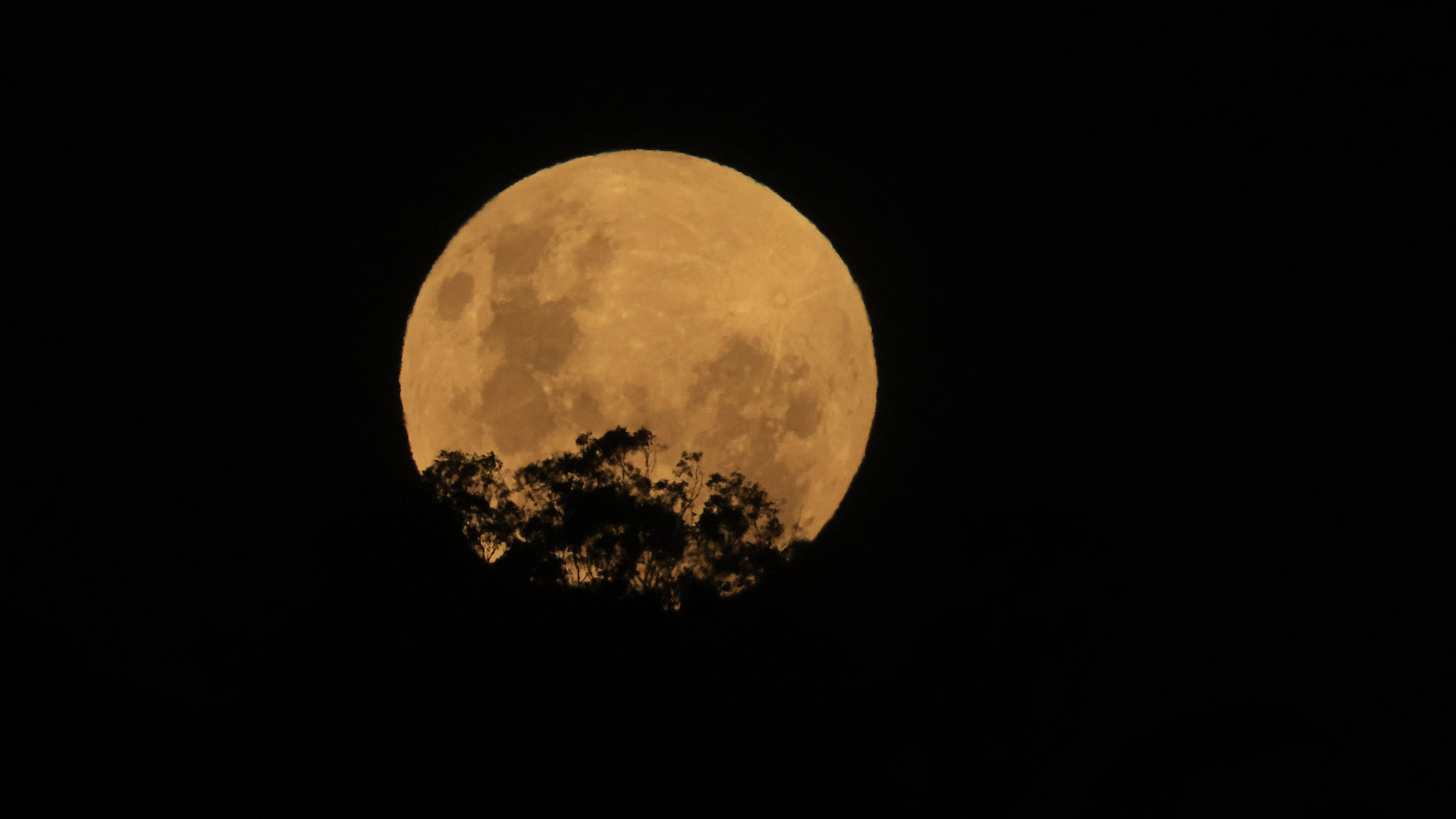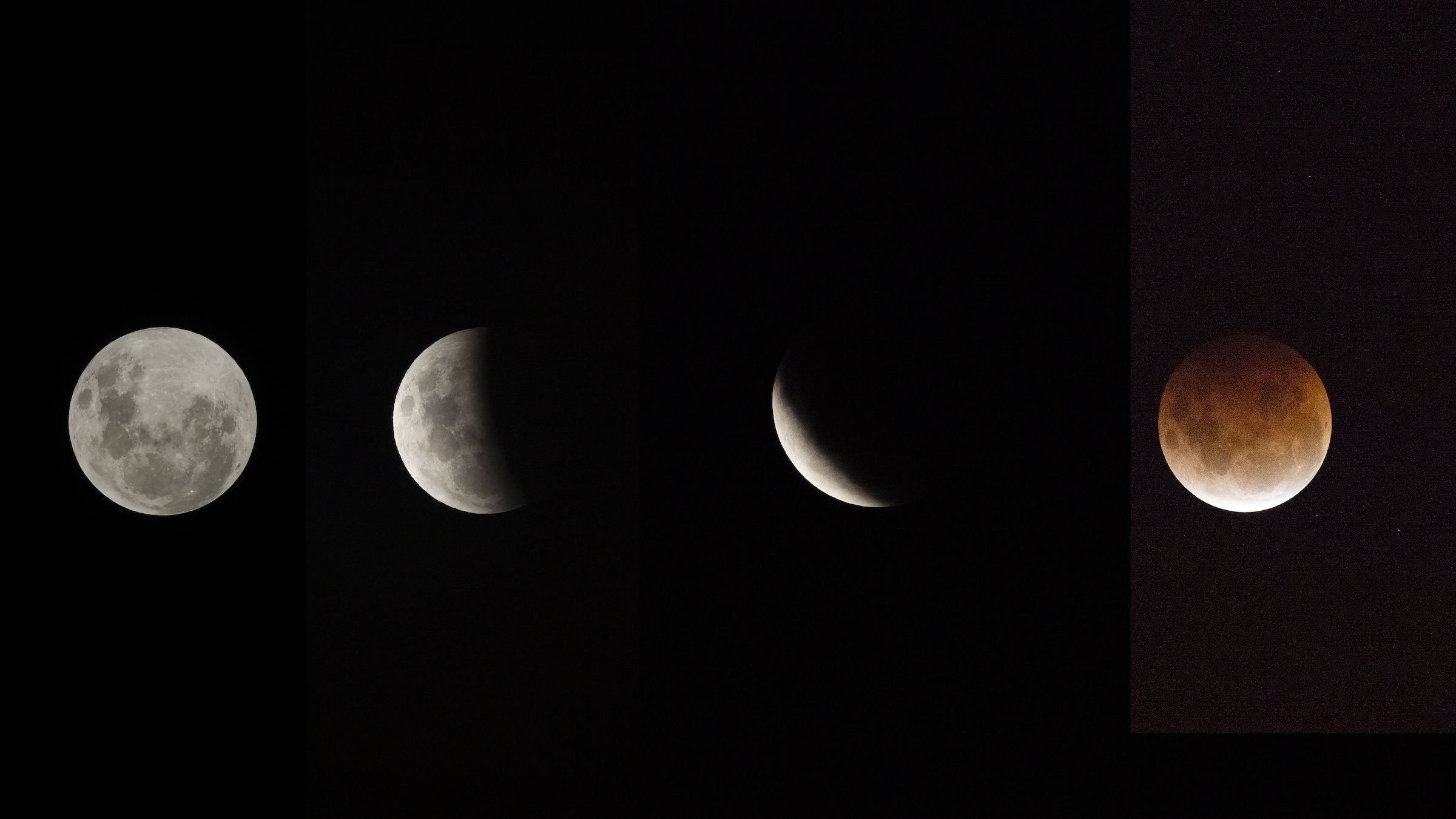Blood Supermoon Lunar Eclipse wows skywatchers around the world (photos)
Here's what the moon looked like during totality.
For the first time in nearly 2.5 years, skywatchers were treated to a total lunar eclipse Wednesday morning (May 26). Luckily for anyone who missed it, many of these sky-gazers snapped photos of the moon with cameras ranging from those on smartphones to those equipped with telephoto lenses.
The celestial show began the Tuesday night (May 25), with the Flower Moon rising high in the night sky. May's full moon, named for the wildflowers blooming around the Northern Hemisphere, was the closest full moon to Earth of 2021, meaning it was larger and brighter than usual, or in other words, a supermoon.
Skywatchers in the lunar eclipse's path got an eyeful just before 6 a.m. EDT (10:00 UTC) Wednesday morning, when the partial eclipse started. During this phase, the moon moved into Earth's dark shadow, or umbra. This shadow is so dark, it looked as though a monster had taken a circular bite out of the moon. Then, shortly after 7 a.m. EDT (11:00 UTC), the umbra completely covered the moon, leading to totality.
Here are photos of the total lunar eclipse taken by photographers around the world.
Related: Glitzy photos of a supermoon
Rusty red over Indonesia
The full moon is nearly in totality in this photo from Sanur Beach, Denpasar, Bali, Indonesia on May 26, 2021. During totality, the moon is completely covered by Earth's dark umbral shadow. But the sun's rays bending around Earth, which pass through Earth's atmosphere, can still reach the moon. These rays are red, as Earth's atmosphere filters out the shorter blue wavelengths, but lets the longer red ones through.
Santa Monica moon
A man takes a walk during the total lunar eclipse from Santa Monica Beach in California on May 26, 2021. Totality, when the Flower Moon turned red, lasted just over 14 minutes.
Get the world’s most fascinating discoveries delivered straight to your inbox.
Celestial show over Christchurch, New Zealand
Usually the bright full moon dims out other celestial objects in the night sky. But when the May 26 full moon dimmed during totality, it was easier for sky-gazers on Earth to see bright stars in the sky, as they did here in Christchurch, New Zealand.
This was New Zealand's first visible super blood moon since December 1982.
Time-lapse from Mexico
A composite image of the total lunar eclipse on May 26, 2021, as seen from Mexico City, Mexico.
As seen from Chile
This photo, snapped in Santiago, Chile on May 26, 2021, shows just a sliver of the moon illuminated.
California view
Live Science reader Michael Hunter snapped this photo showing the partial eclipse phase from Fremont, California. Hunter noted that he never changed his camera's time for daylight saving, so the timestamp is an hour early (it was really 3:51 a.m. PDT). During this phase, the moon was still entering the Earth's dark umbral shadow.
"[The] moon was about to pass behind [the] rooftop, causing difficulty to focus," Hunter told Live Science. But we're thrilled we can see the moon's reddish tint.
Supermoon in Australia
The Flower supermoon rises above Rylstone, Australia, on May 26, 2021. According to NASA, supermoons can appear up to 14% larger and up to 30% brighter than the average full moon.
New Zealand combo
A combination of photos from the super blood Flower moon eclipse, as seen from Christchurch, New Zealand, on May 26, 2021.
The images show the full supermoon (left), the partial eclipse phase (two middle moons), and the moon in near totality (right).
Hawaii shot

This shot of the total lunar eclipse on May 26, 2021, taken during near totality, was snapped on the island of Kauai in Hawaii.
Starry sky from Santa Cruz de las Flores, Mexico
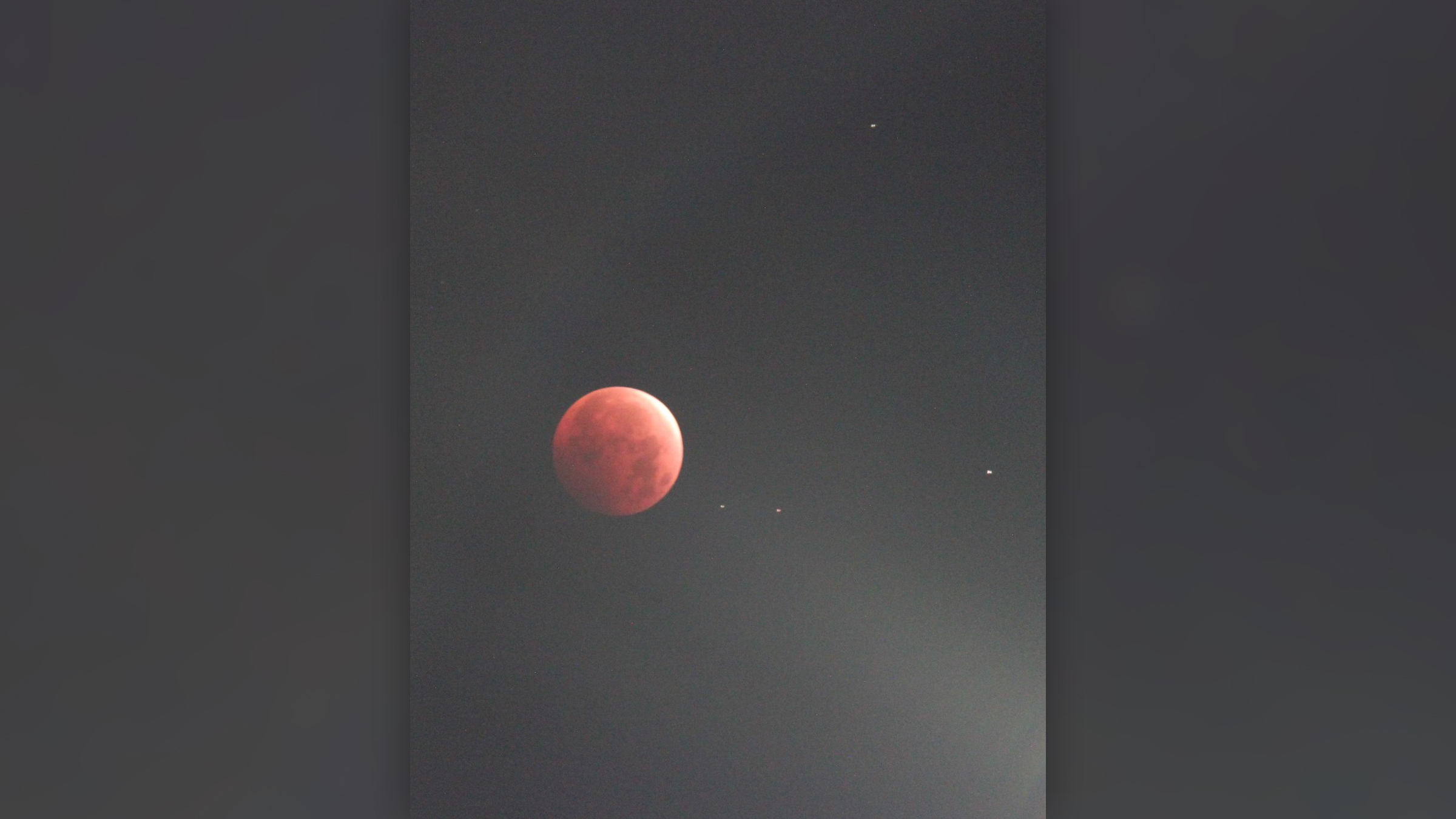
Live Science reader Brenda Douglas took this photo of the burgundy red Flower Moon on May 26, 2021 from Santa Cruz de las Flores, a town just south of Guadalajara in Mexico.
Flower Moon in the Philippines
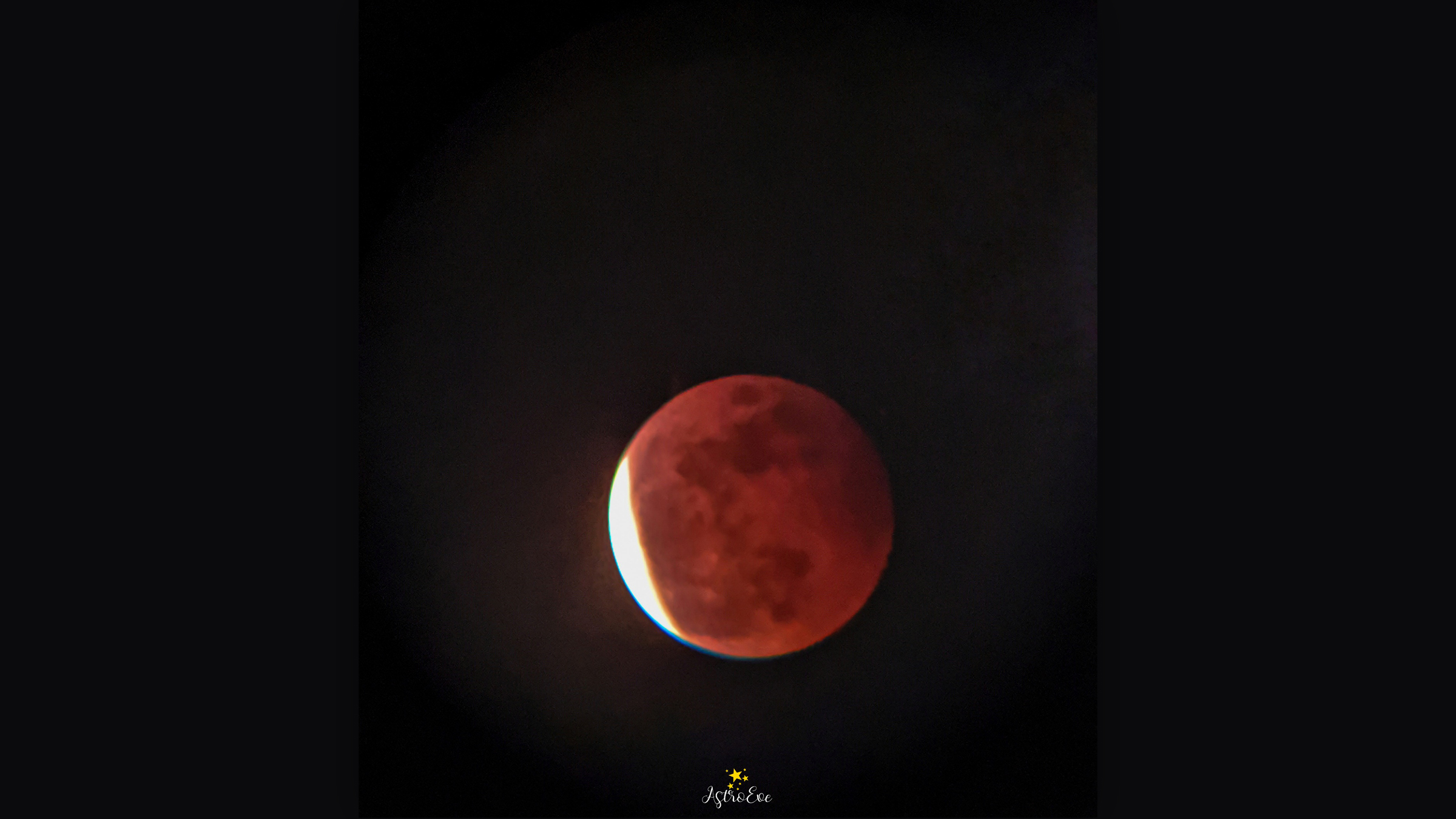
Live Science reader Evelyn Lapeña took this fantastic shot on May 26, 2021 from the Philippines with the help of a F36050 telescope.
Oregon View
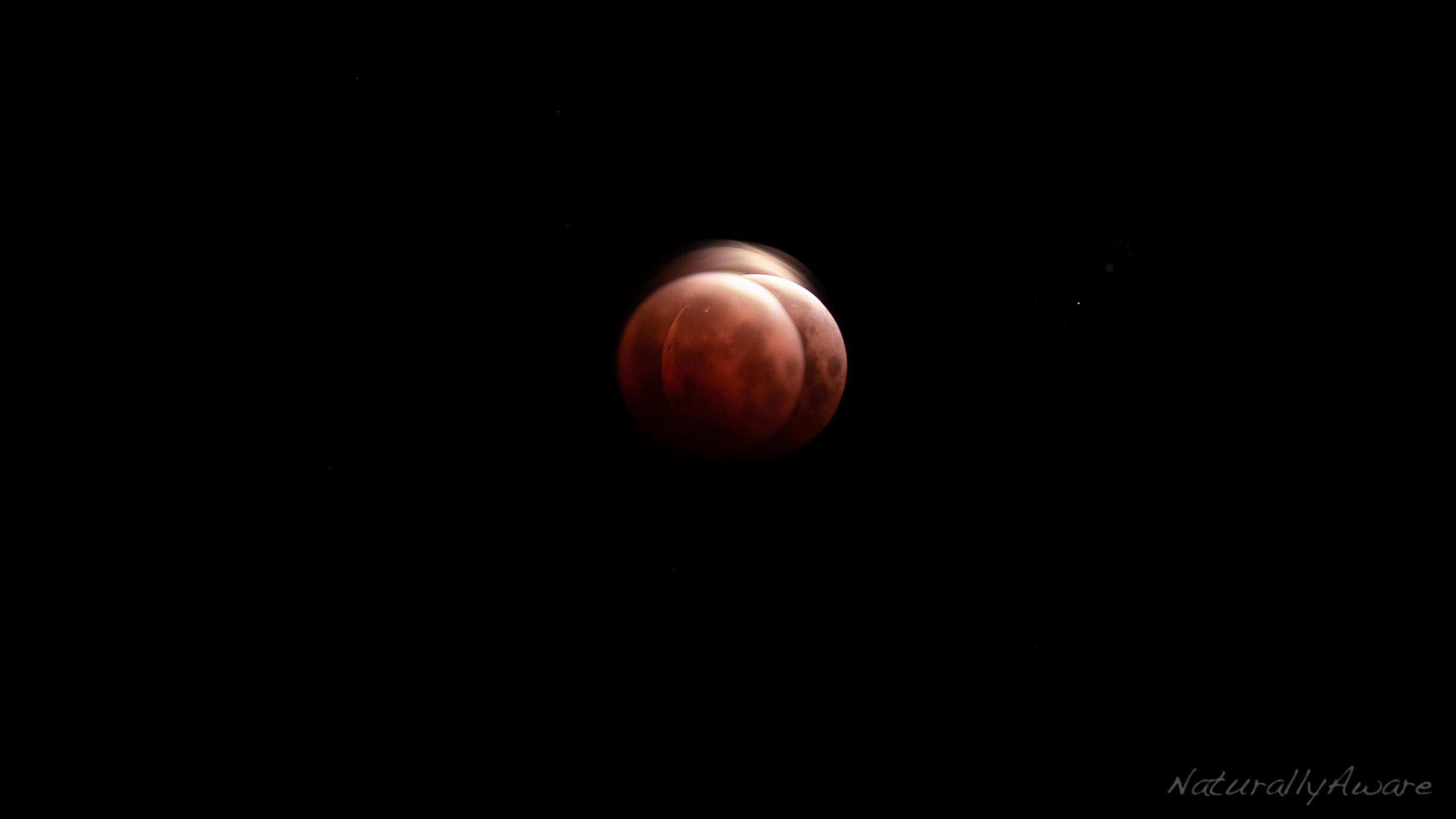
In this blood moon photo, taken May 26, 2021, Live Science reader Deb Merchant said she was "standing next to a farm field and old barn in Albany, Oregon at 4:12 a.m. [PDT]." She recalled the "frogs calling… owls hooting… birds singing… and the moon hanging in the sky for my artsy-fartsy shot of the lunar eclipse!"
Red moon in Redwood City

Live Science reader Matt Frisbie took this photo during the total lunar eclipse on May 26, 2021 in Redwood City, California. "Crystal clear skies at 4 a.m. [PDT], shot this with a Nikon D3300," Frisbie told Live Science.
Mountain View lunar eclipse

Gordon Hamachi, a Live Science reader, snapped this photo of the total lunar eclipse from Mountain View, California on May 26, 2021. Just as the full moon was almost entirely in totality, "I held my iPhone up to the eyepiece of a Meade Infinity 70 mm refractor telescope to take this photo," he told Live Science in an email.
Originally published on Live Science.

Laura is the managing editor at Live Science. She also runs the archaeology section and the Life's Little Mysteries series. Her work has appeared in The New York Times, Scholastic, Popular Science and Spectrum, a site on autism research. She has won multiple awards from the Society of Professional Journalists and the Washington Newspaper Publishers Association for her reporting at a weekly newspaper near Seattle. Laura holds a bachelor's degree in English literature and psychology from Washington University in St. Louis and a master's degree in science writing from NYU.





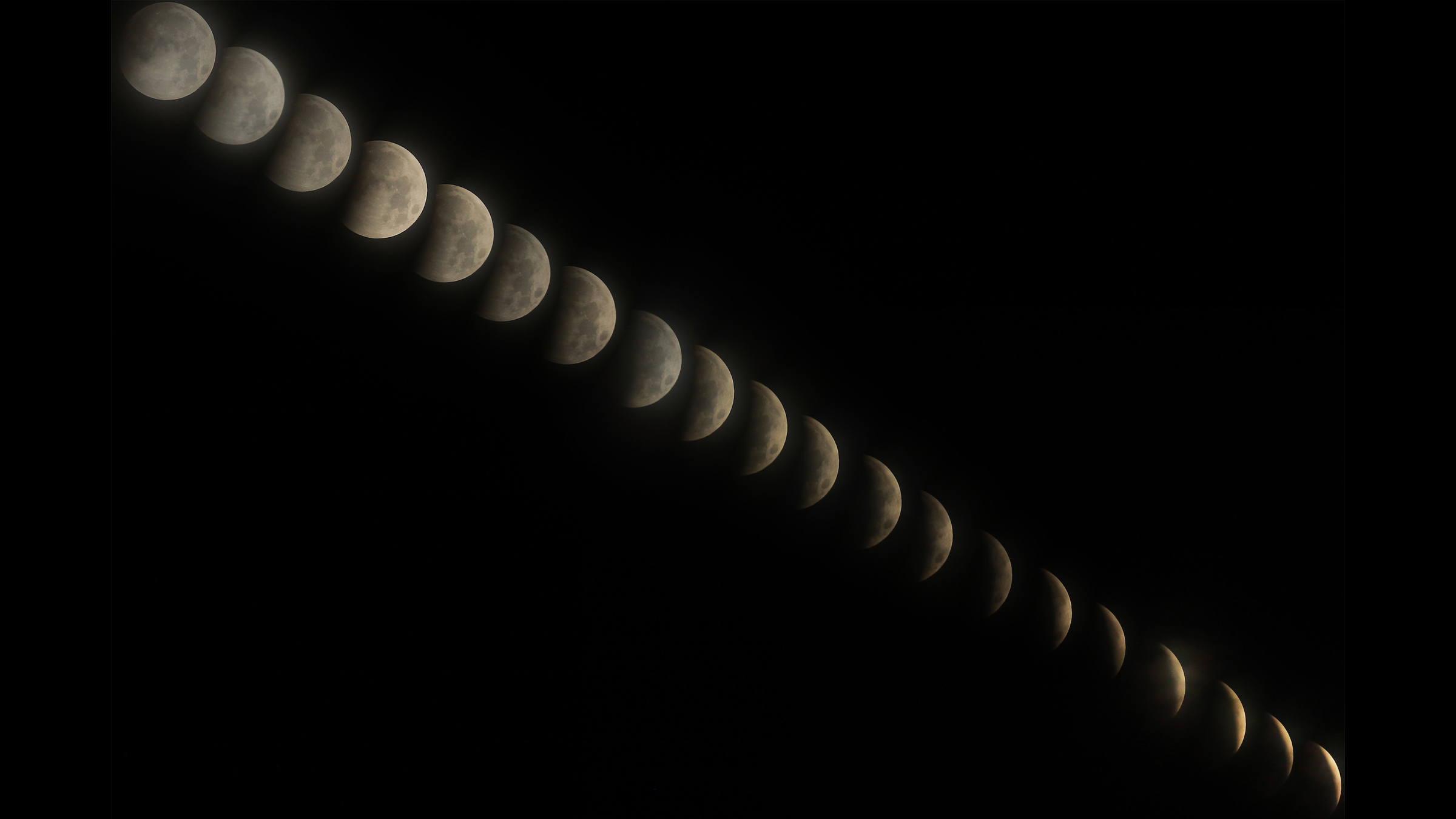
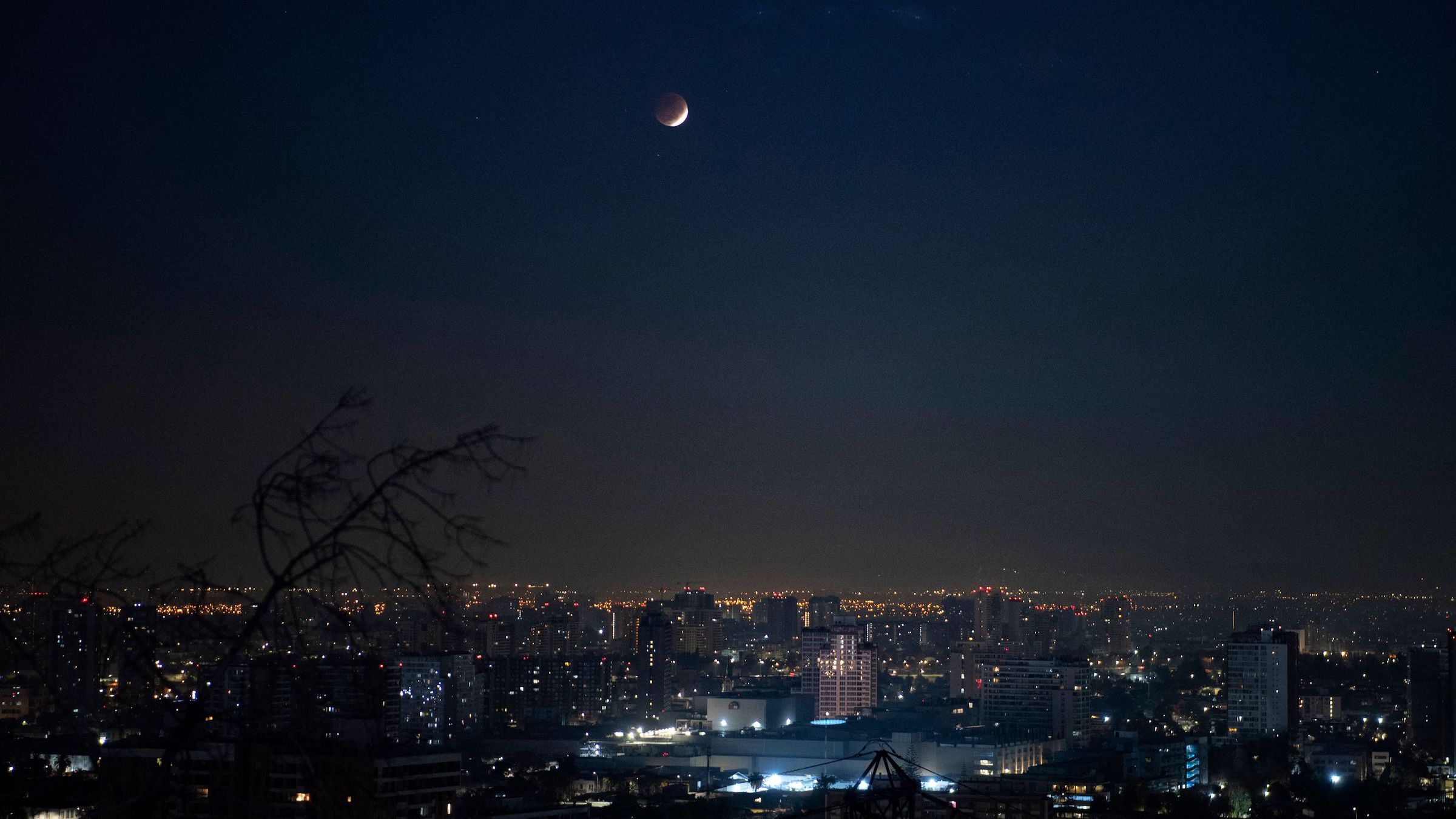
![Live Science reader Michael Hunter snapped this photo showing the partial eclipse phase in Fremont, California. Hunter noted that he never changed his camera's time for Daylight Saving, so the timestamp is an hour early (it was really 3:51 a.m. PDT). During this phase, the moon was still entering the Earth's dark umbral shadow. "[The] moon was about to pass behind [the] rooftop, causing difficulty to focus," Hunter told Live Science. But you can still see the moon's reddish tint.](https://cdn.mos.cms.futurecdn.net/ne5bhWeGA3iNXEmhZnSFa3.jpg)
